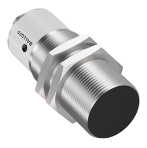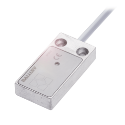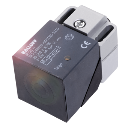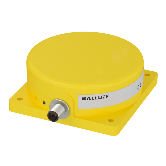Manufacturers of mobile equipment are tasked with the never-ending pursuit of making their machines more productive while adhering to the latest safety regulations, and all at less cost. To help achieve these goals, machines today use electronic control modules to process inputs and provide outputs that ultimately control the machine functions. Yet with all the changes in recent years, one component left over from that earlier era remains in regular use — the mechanical switch. Switches offered a variety of levers, rollers, and wands for actuation, and many were sealed for an IP67 rating for outdoor use, but they came with an array of problems, including damaged levers, contact corrosion, arcing concerns, dirt or grain dust ingress, and other environmental hazards. Still, overall they were an acceptable and inexpensive way to receive position feedback for on/off functions.
Today, mechanical switches can still be found on machines used for boom presence, turret location, and other discrete functions. But are they the right product for today’s machines?
The original design parameters may have required the switch to drive the load directly, and therefore a rating of 10A@240V might be a good design choice for the relay/diode logic circuits of the past. But a newly designed machine may be switching mere milliamps through the switch into the control module. Does the legacy switch have the proper contact plating material for the load today? Switches use rare metals such as rhodium, palladium, platinum, gold, and silver in attempts to keep the contact resistance low and to protect those contacts from corrosion. Consequently, as China pursues Nonroad Stage IV standards, these metals, some also used in catalytic converters, have sharply increased in price, leading to substantial cost increases to switch manufacturers and ultimately switch users.
A better approach to position feedback for today’s mobile machines is the inductive position sensor. Inductive sensors offer a sealed, non-contact alternative to mechanical switches. Sensing ferrous and non-ferrous metals without physical contact, they eliminate many of the field problems of the past, and non-metallic substances such as water, dirt, and grain dust, do not affect the operation. These qualities make the sensor very suitable for the harsh conditions found in agricultural and construction environments.
Inductive proximity sensors come in a variety of form factors:
Threaded cylindrical – With zinc-plated brass or stainless-steel housings, the threaded barrel styles are popular for their ease of mounting and gap adjustment.

Low profile rectangular – These “flatpack” style sensors are great under seats for operator presence.

Block designs – The compact, cubed package is ideal for larger sensing ranges.

Large cylindrical – These large “pancake” style sensors are great for detecting suspension movements and other applications requiring extreme ranges.

Inductive position sensors are more than just a discrete product used for detecting linkage, operator presence, or turret stops; They can also perform the duties of a speed sensor by counting teeth (or holes) to determine the RPM of a rotating shaft. Other models offer analog outputs to provide a continuous feedback signal based on the linear location of a metal linkage or lever. Safety rated outputs, high temperatures, and hazardous area options are some of the many product variants available with this electromagnetic technology.
So, perhaps it’s time to review that legacy switch and consider an inductive sensor?
To learn how an inductive position sensor performs its magic, please take a look at an earlier blog:
























